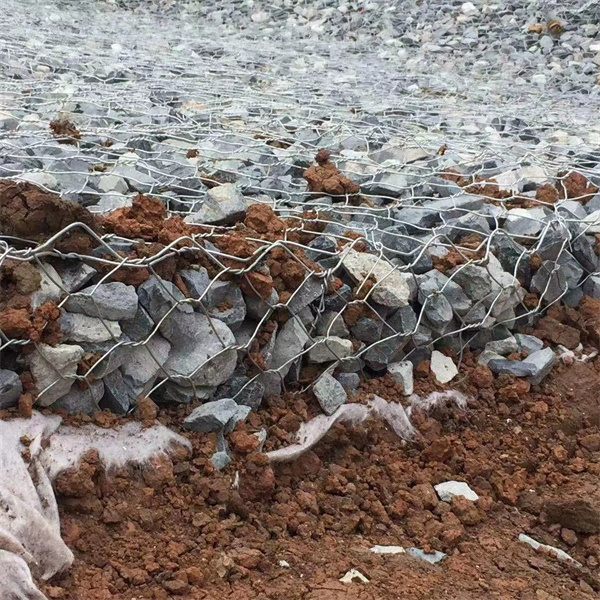ต.ค. . 21, 2024 23:13 Back to list
Durable Small Gabion Wall for Enhanced Landscape Design and Erosion Control
Building a High-Quality Small Gabion Wall A Comprehensive Guide
In the world of landscaping and civil engineering, gabion walls have gained popularity for their aesthetic appeal and practical utility. A gabion wall is essentially a structure made from wire mesh baskets filled with rocks or other materials, designed to retain soil, control erosion, and enhance the visual landscape. This article will explore the importance of small gabion walls, how to construct one, and the factors to consider to ensure high quality in your project.
Why Choose Gabion Walls?
Gabion walls are favored for several reasons. First, they provide effective erosion control and help stabilize slopes, making them ideal for both residential and commercial projects. Their porous nature allows water to flow freely, reducing the risk of hydrostatic pressure behind the wall. Additionally, the varied textures and colors of the stones used in gabions can create visually appealing landscapes, blending seamlessly with the natural environment.
Materials Needed
To build a high-quality small gabion wall, you will need
1. Gabion Wire Mesh Baskets These are typically made from galvanized steel or PVC-coated wire to resist rust and corrosion. Choose a size that suits your project; smaller baskets work well for decorative walls, while larger ones are needed for structural support.
2. Filling Material Common materials include rocks, gravel, or recycled concrete. Choose angular stones as they lock together better than rounded stones, providing greater stability.
4. Tools Essential tools include gloves, pliers for fastening the baskets, a shovel for filling, and a level to ensure the accuracy of the wall's construction.
Construction Steps
1. Planning and Design Start with a clear plan. Determine the location, height, and length of the wall. Ensure to check local regulations and obtain any necessary permits.
high quality small gabion wall

2. Excavation Clear the area where the wall will be built. Dig a trench deep enough to accommodate the base of your gabion baskets, ideally around 6 inches deep, ensuring a stable foundation.
3. Laying the Geotextile Place geotextile fabric at the bottom of the trench and extend it upwards along the wall's inside. This will prevent soil erosion while allowing for drainage.
4. Assembling the Gabion Baskets Follow the manufacturer's instructions to assemble the baskets. Use pliers to secure the edges with spirals or clips. Ensure the corners are tight to prevent shifting.
5. Filling the Baskets Start with the first layer by filling the gabion baskets with your chosen materials. Aim for maximum compaction while ensuring the stones fit snugly against each other. This increases the wall’s strength and stability.
6. Layering Once the first row is complete, repeat the process for subsequent layers. Make sure each layer is leveled properly before proceeding to the next to ensure the wall remains straight and durable.
7. Finishing Touches After the final layer is filled, cut excess geotextile fabric and tuck it into the baskets. This not only provides a neat appearance but also protects against soil loss.
8. Inspection Finally, inspect the wall for any gaps or weaknesses. Tighten the mesh if necessary, and ensure the structure is sturdy.
Maintenance Tips
While gabion walls are relatively low-maintenance, periodic inspections are essential. Check for any loose stones, rust on the wire mesh, or signs of erosion around the base. Cleaning the wall occasionally will help maintain its appearance and functionality.
Conclusion
A high-quality small gabion wall is not just a functional construction but also an aesthetic addition to any landscape. By following proper construction techniques and using quality materials, you can create a resilient and attractive gabion wall that will stand the test of time. Whether for soil retention, decoration, or both, gabion walls offer a versatile solution for various landscaping needs. Embrace the opportunity to enhance your outdoor space with a sturdy and visually stunning gabion wall.
-
Versatility of Chain Link Fence Gabion
NewsMay.13,2025
-
Trusted Gabion Box Suppliers
NewsMay.13,2025
-
PVC Coated Gabion for Long-Lasting Structural Integrity
NewsMay.13,2025
-
Garden Gabion for Stylish
NewsMay.13,2025
-
Galvanized Gabion for Durable Outdoor Structures
NewsMay.13,2025
-
Gabion Box Factory
NewsMay.13,2025
-
Gabion Basket Wire Gauge and Mesh
NewsMay.13,2025






